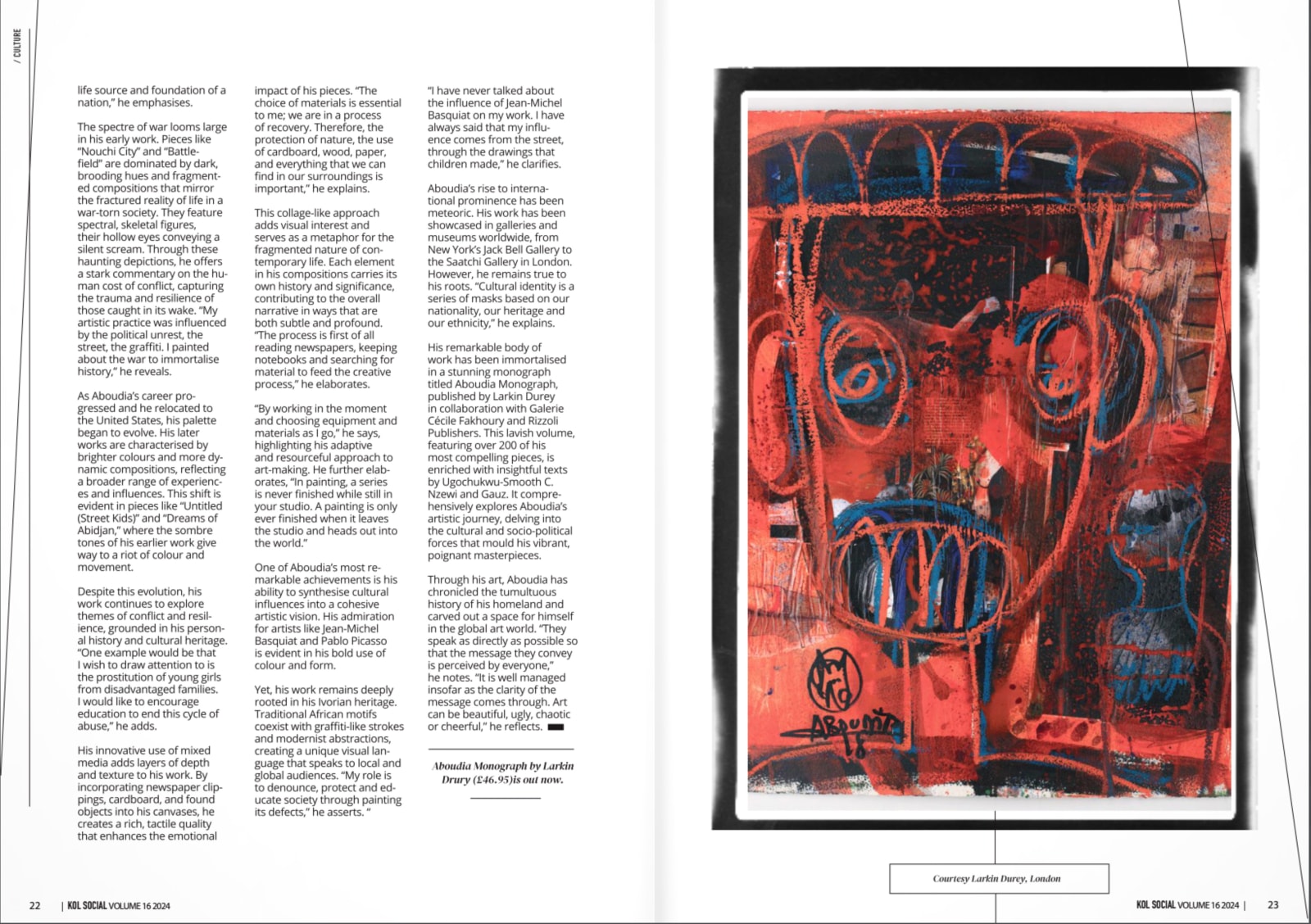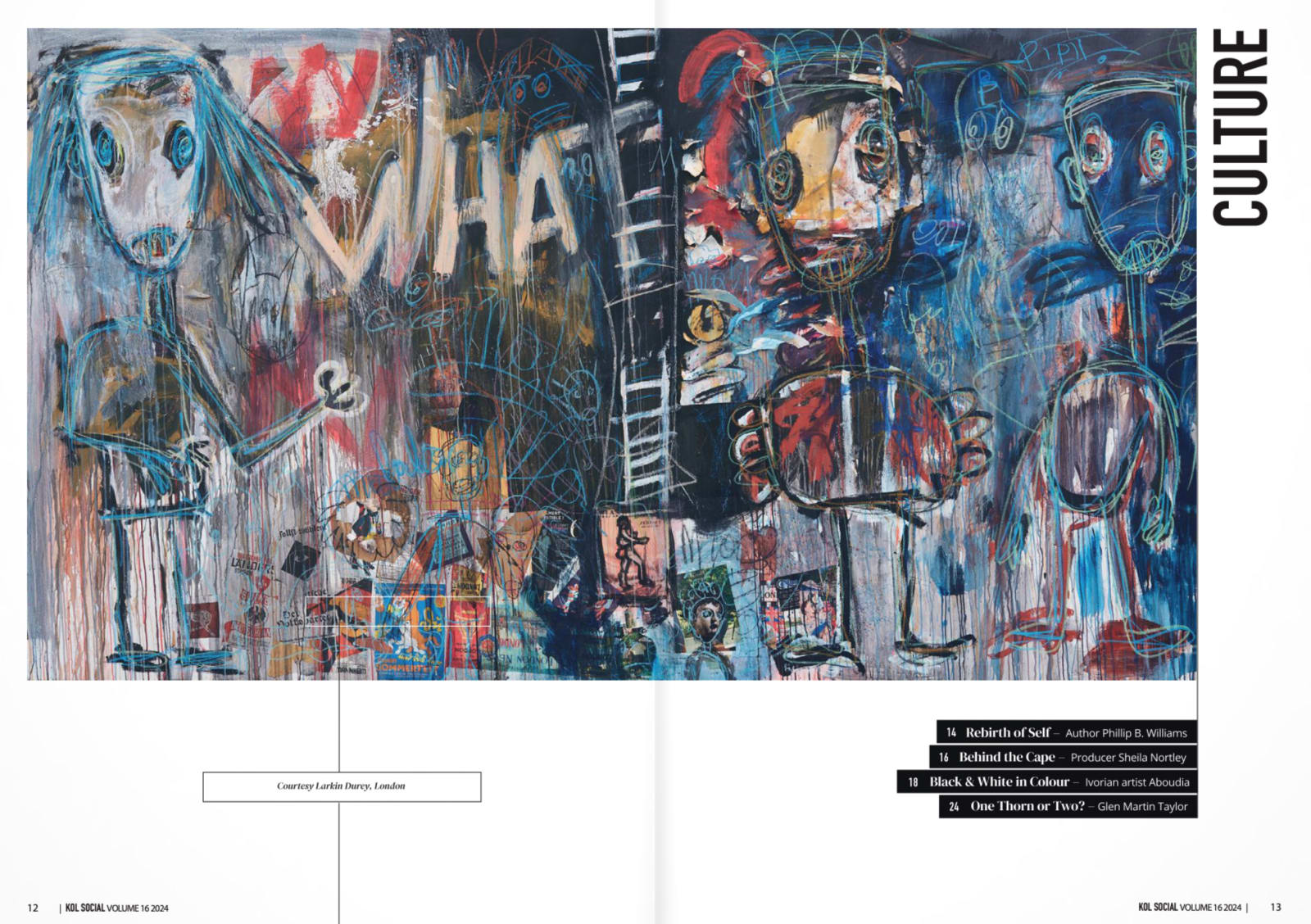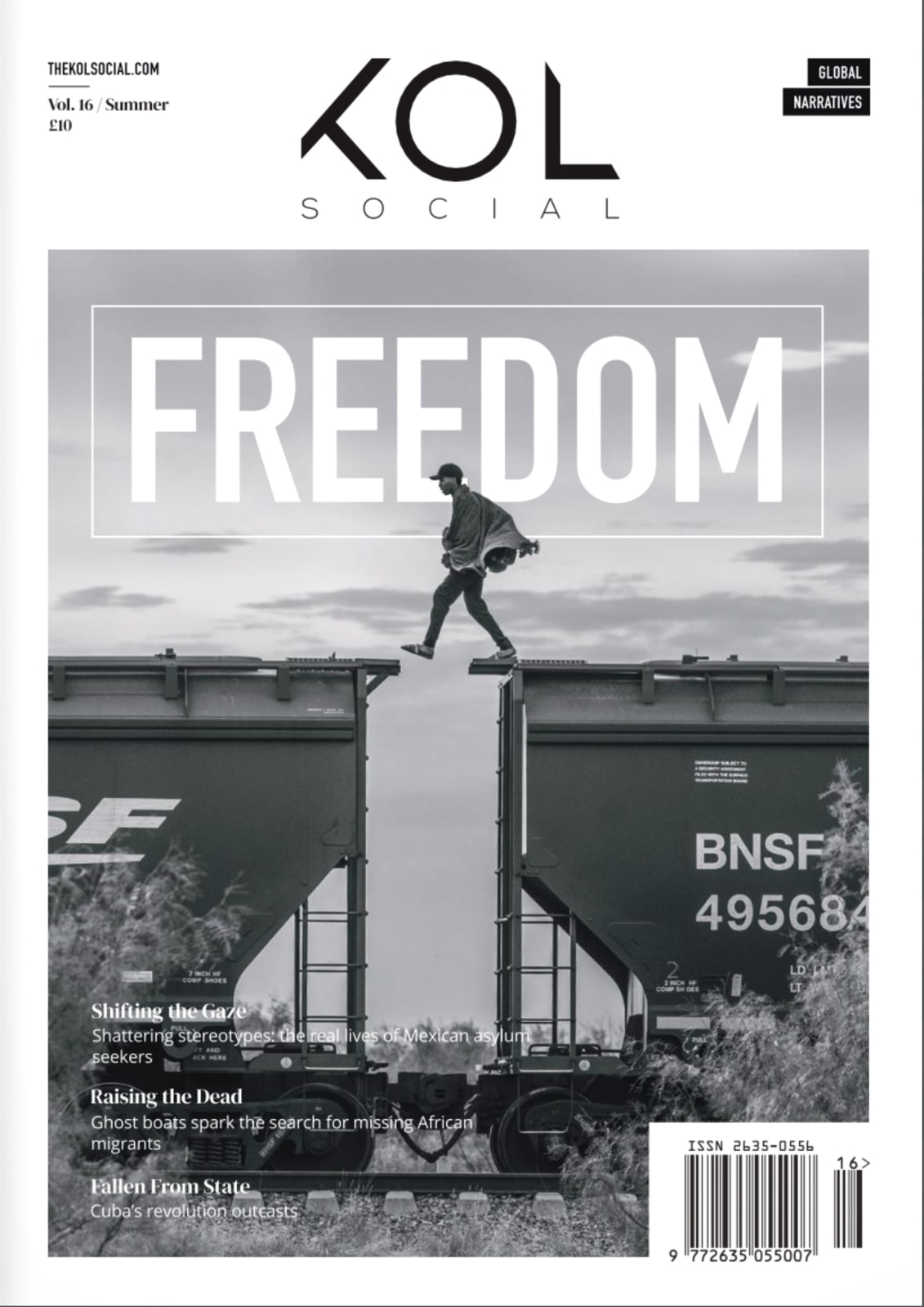KOL Social / Marcia Degia
In 2021, Aboudia's painting "Nouchi City" sold for over £200,000 at Sotheby's, signalling a seismic shift in the contemporary art world. This vibrant tableau, a kaleidoscope of raw emotion and frenetic energy, encapsulates urban struggle and resilience. The record-breaking sale cemented Aboudia's status as a formidable force in modern art. highlighting the universal appeal of his distinctive style -- a blend of traditional African motifs and contemporary graffiti. This sale marked significant recognition of African contemporary art, underscoring its global impact and relevance. How did this former street artist from the war-torn streets of Abidian achieve such heights? The answer lies in his extraordinary journey and the powerful stories embedded in his work.
Born Aboudia Abdoulaye Diarrassouba in 1983 in Abidjan, Côte d'ivoire, Aboudia's early life was overshadowed by the violence and upheaval of the Ivorian Civil War. This period of intense conflict left an indelible mark on him, infusing his art with a sense of urgency and resilience. Growing up amid chaos, Aboudia found his voice through art, inspired by the vibrant street murals that told the unspoken stories of his city. "I don't necessarily choose; it's imposed on me based on everything that's happening in this world," he explains.
Aboudia's art is immediately recognisable for its frenetic energy and crowded compositions, where exaggerated, sometimes grotesque figures jostle for space. These figures are not passive subjects but active participants in a chaotic narrative that mirrors the artist's experiences. This sense of urgency and crowdedness is a direct reflection of the urban landscapes he depicts, environments where life is lived at breakneck speed, and the struggle for survival is ever-pres-ent. "I want to protect the child. The child is everything. Children are the life source and foundation of a nation," he emphasises.
The spectre of war looms large in his early work. Pieces like
"Nouchi City" and "Battlefield" are dominated by dark, brooding hues and fragmented compositions that mirror the fractured reality of life in a war-torn society. They feature spectral, skeletal figures, their hollow eves conveying a silent scream. Through these haunting depictions, he offers a stark commentary on the human cost of conflict, capturing the trauma and resilience of those caught in its wake. "My artistic practice was influenced by the political unrest, the street, the graffiti. I painted about the war to immortalise history," he reveals.
As Aboudia's career progressed and he relocated to the United States, his palette began to evolve. His later works are characterised by brighter colours and more dynamic compositions, reflecting a broader range of experiences and influences. This shift is evident in pieces like "Untitled (Street Kids)" and "Dreams of Abidian." where the sombre tones of his earlier work give way to a riot of colour and movement. Despite this evolution, his work continues to explore themes of conflict and resil-ience, grounded in his personal history and cultural heritage. "One example would be that I wish to draw attention to is the prostitution of young girls from disadvantaged families. I would like to encourage education to end this cycle of abuse," he adds.
His innovative use of mixed media adds layers of depth and texture to his work. By incorporating newspaper clip-pings, cardboard, and found objects into his canvases, he creates a rich, tactile quality that enhances the emotional impact of his pieces. "The choice of materials is essential to me; we are in a process of recovery. Therefore, the protection of nature, the use of cardboard, wood, paper, and everything that we can find in our surroundings is important," he explains. This collage-like approach adds visual interest and serves as a metaphor for the fragmented nature of contemporary life. Each element in his compositions carries its own history and significance, contributing to the overall narrative in ways that are both subtle and profound. "The process is first of all reading newspapers, keeping notebooks and searching for material to feed the creative process," he elaborates.
"By working in the moment and choosing equipment and materials as I go," he says, highlighting his adaptive and resourceful approach to art-making. He further elab-orates, "In painting, a series is never finished while still in your studio. A painting is only ever finished when it leaves the studio and heads out into the world."
One of Aboudia's most remarkable achievements is his ability to synthesise cultural influences into a cohesive artistic vision. His admiration for artists like Jean-Michel Basquiat and Pablo Picasso is evident in his bold use of colour and form. Yet, his work remains deeply rooted in his Ivorian heritage. Traditional African motifs coexist with graffiti-like strokes and modernist abstractions, creating a unique visual language that speaks to local and global audiences. "My role is to denounce, protect and ed-cate society through painting its defects," he asserts. "I have never talked about the influence of Jean-Michel Basquiat on my work. I have always said that my influence comes from the street, through the drawings that children made," he clarifies.
Aboudia's rise to international prominence has been meteoric. His work has been showcased in galleries and museums worldwide, from Jack Bell Gallery to the Saatchi Gallery in London.
However, he remains true to his roots. "Cultural identity is a series of masks based on our nationality, our heritage and our ethnicity," he explains.
His remarkable body of work has been immortalised in a stunning monograph titled Aboudia Monograph, published by Larkin Durey in collaboration with Galerie Cécile Fakhoury and Rizzoli Publishers. This lavish volume, featuring over 200 of his most compelling pieces, is enriched with insightful texts by Ugochukwu-Smooth C. Nzewi and Gauz. It comprehensively explores Aboudia's artistic journey, delving into the cultural and socio-political forces that mould his vibrant, poignant masterpieces. Through his art, Aboudia has chronicled the tumultuous history of his homeland and carved out a space for himself in the global art world. "They speak as directly as possible so that the message they convey is perceived by everyone," he notes. "It is well managed insofar as the clarity of the message comes through. Art can be beautiful, ugly, chaotic or cheerful," he reflects.
Aboudia Monograph by Larkin Durey (£46.95) is out now.






